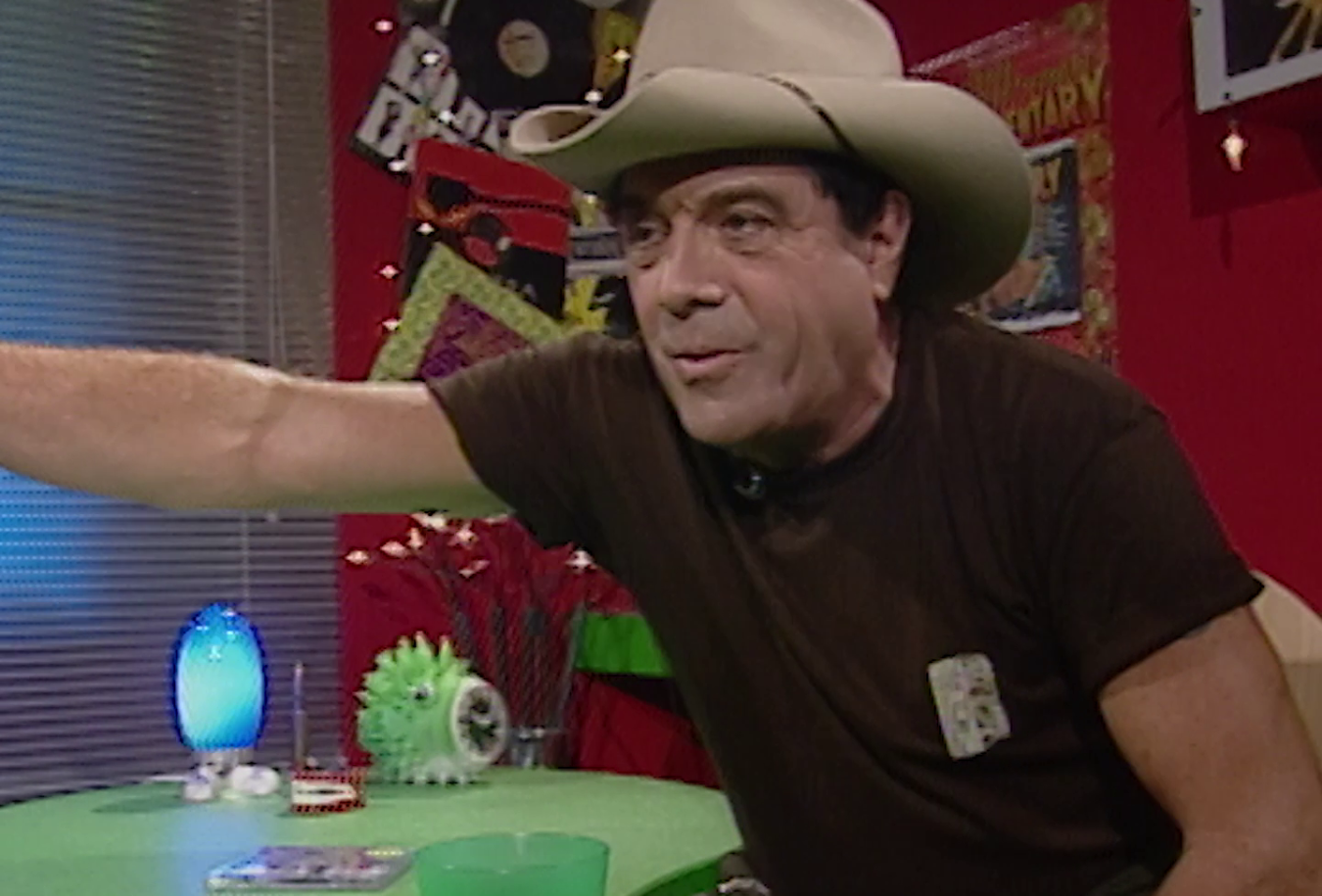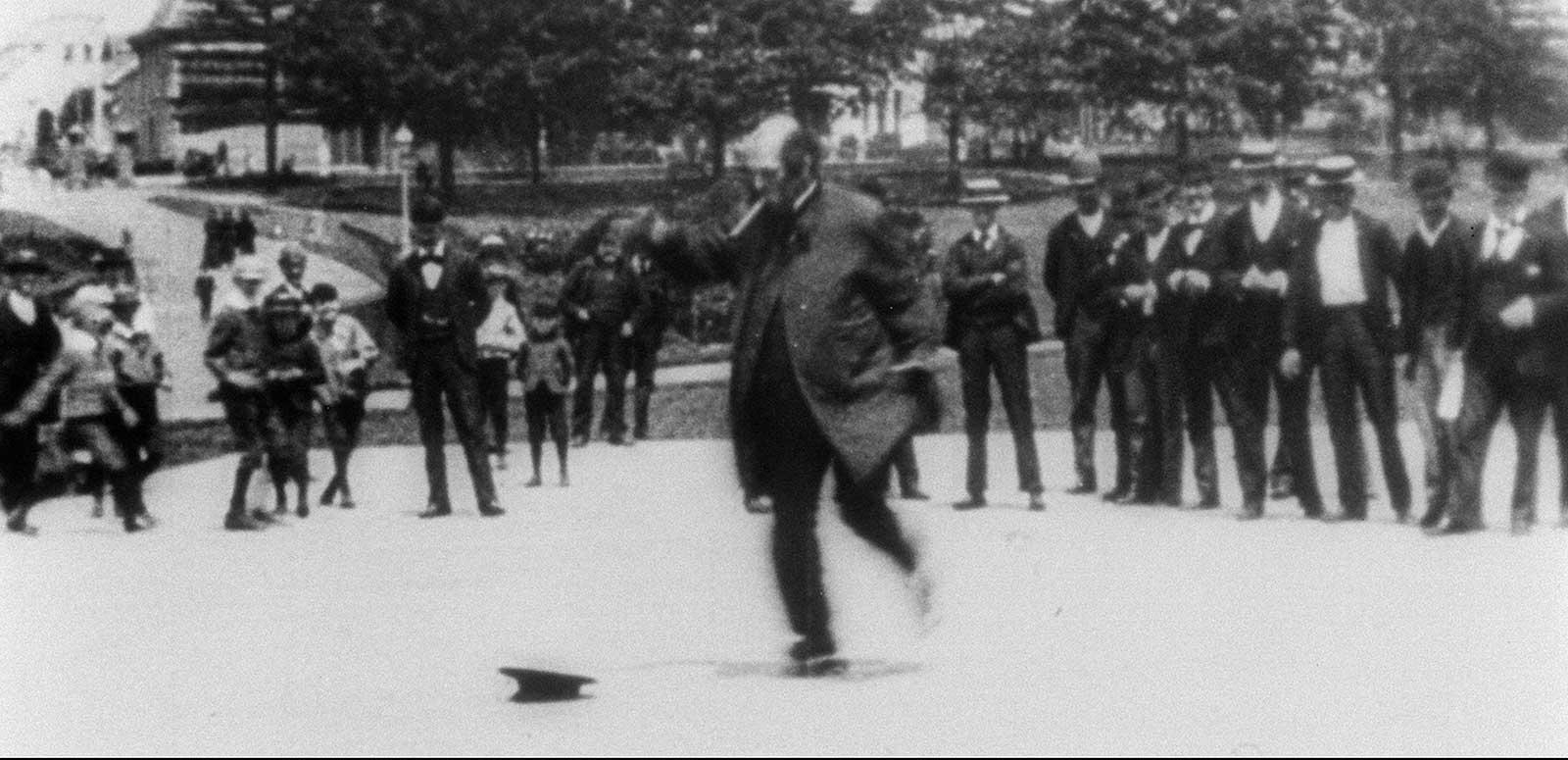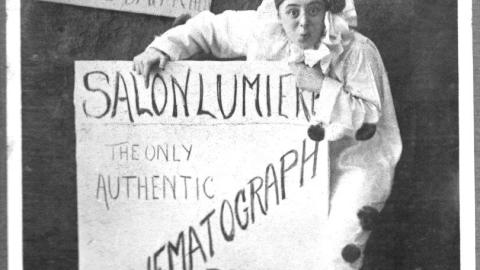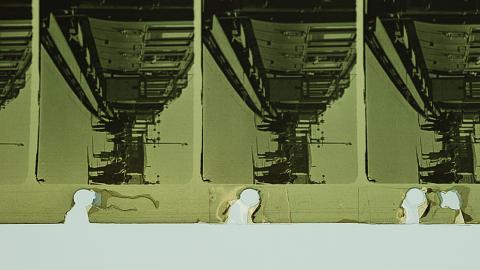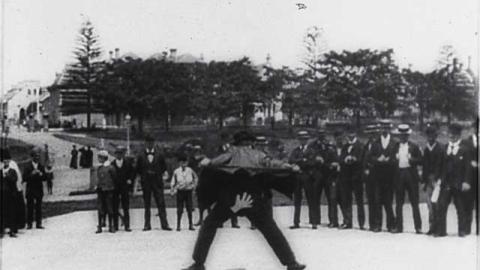One of the world’s earliest films was made in Australia – and although it’s from the Victorian era, it’s a little bit cheeky.
Patineur Grotesque (or The Burlesque Rollerskater) lasts for just one minute. A bearded man in street clothes, smoking an outsize cigar, is rollerskating in a park, watched by a crowd. He loses his hat and tumbles over clownishly when he tries to retrieve it. Jamming it back on his head, he gains his feet and moons his audience with a series of bows that reveal a white hand printed on his trousers, as if it’s gripping his buttocks. His finale is a dizzying series of spins – over 20 in a row – that show him to be an athletic performer dressed as a staid middle-aged man.
Slapstick, dance moves, a playful reveal – all in a tight one-minute. TikTok would be proud.
